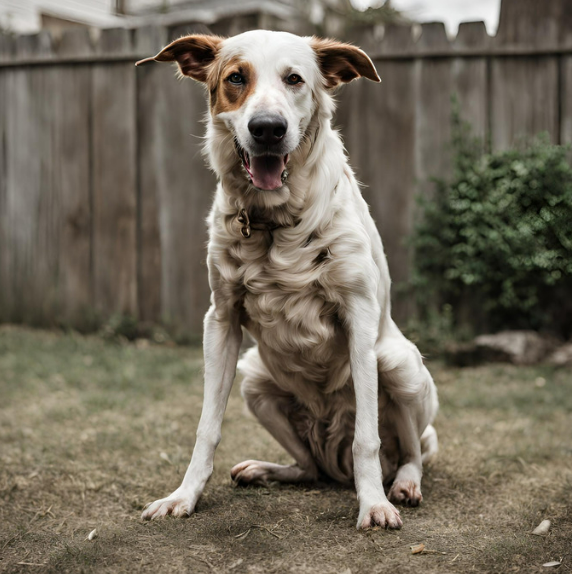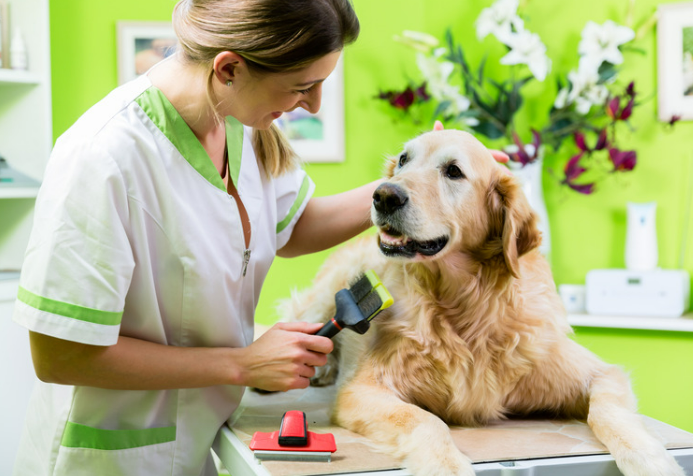Introduction
Welcome to our essential guide on detecting fleas in your beloved canine companions. Fleas, those tiny, agile parasites, are not just a nuisance but a serious threat to your dog’s health and comfort. Early detection is vital in preventing an infestation from taking hold and ensuring your furry friend stays happy and healthy. In this guide, we delve into the world of fleas, uncovering the telltale signs of their presence on your pet. Whether you’re a seasoned dog owner or new to the world of canines, this article is your roadmap to understanding and tackling flea infestations effectively. Our journey begins with recognizing the initial signs of trouble, followed by practical, step-by-step advice on confirming and dealing with these pesky intruders. So, let’s start this crucial journey to a flea-free life for your dog. …Click here to read more about fleas!
Recognizing the Signs of Flea Infestation
Understanding the indicators of a flea infestation is crucial for any dog owner. Fleas are not only bothersome but can also lead to health issues in your pet. Here, we break down the key signs to watch for, both physically and behaviorally.
Physical Indicators:
The most apparent sign of fleas is often seen directly on your dog’s skin. Look out for tiny, red, raised bites, especially around the neck, back, and tail areas. These bites are not only irritating to your dog but can lead to more severe skin infections if left unchecked. Additionally, you might notice your dog scratching, licking, or biting themselves more than usual. This increase in grooming behavior is a response to the itchiness caused by flea bites.

Behavioral Changes:
Fleas can also affect your dog’s behavior. If your typically calm and collected pet suddenly seems restless or anxious, fleas might be the culprit. Another sign is a change in sleeping patterns, with your dog possibly waking up more often due to the discomfort caused by fleas. These behavioral changes are often overlooked, but they are just as important in identifying a potential flea problem.
Being vigilant about these signs is your first line of defense against flea infestations. Early detection not only spares your dog discomfort but also prevents fleas from becoming a larger problem in your home. Remember, a flea-free dog is a happy dog, and that’s what every pet owner strives for.
The Flea Check Process: Step-by-Step
Early detection of fleas on your dog is key to preventing an infestation. A systematic approach to checking your dog for fleas is essential. This section guides you through a thorough and effective flea check process.
Visual Inspection:
Start with a visual inspection of your dog’s coat. Fleas are small, dark brown insects that move quickly through your dog’s fur. Pay special attention to areas like the neck, ears, tail, and abdomen, as fleas prefer these warmer, less accessible spots. You may also spot flea dirt, which looks like small black specks. This is actually flea feces and is a clear indicator of their presence. Good lighting and perhaps a magnifying glass can help make this task easier.
Using Flea Combs:

A flea comb is an invaluable tool for detecting fleas. These combs have fine teeth that can catch fleas and their dirt as you comb through your dog’s fur. Start from the head and move towards the tail, combing in the direction of hair growth. Make sure to comb all the way down to the skin, but be gentle to avoid discomfort. After each pass, check the comb for fleas or flea dirt. Dipping the comb in a solution of soapy water can help kill any fleas caught in the comb.
Remember, regular checks are vital, especially during the warmer months when fleas are most active. Catching fleas early makes treatment more straightforward and less stressful for both you and your pet. By incorporating these steps into your routine, you can keep your dog comfortable and healthy.
Environmental Indicators of Flea Presence
Identifying fleas on your dog is just one part of the battle. Your home environment can also give you clues about a flea infestation. Fleas can thrive in your living space, making it essential to recognize environmental indicators.
Home Inspection:
Begin by inspecting areas where your dog spends the most time. Fleas can hide in bedding, carpets, and furniture. Look for signs of flea dirt or actual fleas, especially in warm, hidden spots. Remember, fleas can jump up to two feet, so check both low and high areas. A flashlight can be helpful in spotting these tiny pests. Vacuuming regularly, washing dog bedding, and cleaning your home thoroughly are crucial steps in controlling a flea problem.
Flea Lifecycle Awareness:
Understanding the flea lifecycle is important in managing an infestation. Fleas go through four stages: egg, larva, pupa, and adult. While adult fleas are visible on your dog, the eggs, larvae, and pupae are found in the environment. These stages can be harder to spot but are equally important in controlling an infestation. Flea eggs are tiny and white, often dropping off your dog onto carpets or bedding. Larvae are small, worm-like creatures that avoid light, hiding in carpets, cracks, or under furniture. Pupae can remain dormant for weeks, waiting for the right conditions to hatch.
Being aware of these signs in your environment is crucial. A holistic approach, treating both your dog and your home, is the best way to tackle a flea infestation effectively. Regular cleaning and vigilance can go a long way in keeping your home flea-free.
Immediate Actions and Preventive Measures
Once you’ve detected fleas on your dog or in your environment, taking immediate action and implementing preventive measures is essential. This dual approach ensures effective flea control and prevents future infestations.
Initial Steps to Take:
If you find fleas on your dog, start with a flea bath using a vet-recommended flea shampoo. This provides immediate relief to your pet and kills most of the fleas on contact. Next, consult with your veterinarian for a comprehensive flea treatment plan. This may include topical treatments, oral medications, or flea collars. Simultaneously, treat your home environment. Vacuum thoroughly and wash your dog’s bedding in hot water to kill flea eggs and larvae. In severe cases, you might consider a professional pest control service.
Preventive Strategies:
Prevention is better than cure when it comes to fleas. Regular use of vet-approved flea control products on your dog is crucial. These can range from monthly topical applications to oral medications or specially designed flea collars. Keep your home clean and vacuum regularly, especially in areas where your dog spends a lot of time. Consider using natural flea repellents like diatomaceous earth or essential oils, but always ensure they are safe for pets. Remember, a flea-free environment is as important as treating your dog.
Taking these immediate and preventive actions can significantly reduce the risk of flea infestations. Regular checks and maintenance are key to keeping your furry friend and your home flea-free. With these steps, you can provide a comfortable, healthy environment for your pet.
Conclusion
As we wrap up this comprehensive guide on detecting and dealing with fleas in dogs, let’s recap the key points and reinforce the importance of vigilance and preventive care.
Early Detection and Treatment:
Early detection of fleas is crucial in preventing a full-blown infestation. Regular checks of your dog and your home are vital. If you find fleas, act immediately to treat your dog and clean your home. Consult a veterinarian for the most effective treatment options. Remember, the sooner you address the problem, the easier it is to control.
Continuous Vigilance and Preventive Care:
Preventing flea infestations is an ongoing process. Regular use of preventive flea treatments for your dog, maintaining cleanliness in your home, and being aware of the signs of flea activity are essential. Stay informed about flea control methods and keep an eye out for new products or natural solutions that might benefit your pet.
In conclusion, understanding and managing flea infestations is a critical aspect of pet care. By following the guidelines we’ve discussed, you can ensure your dog remains happy, healthy, and flea-free. We encourage you to share your experiences and tips with our community. Together, we can keep our furry friends safe and comfortable. For more detailed information on fleas and pet care, visit The American Kennel Club’s guide on fleas. Your feedback and stories are always welcome as we continue our journey towards a flea-free world for our pets.